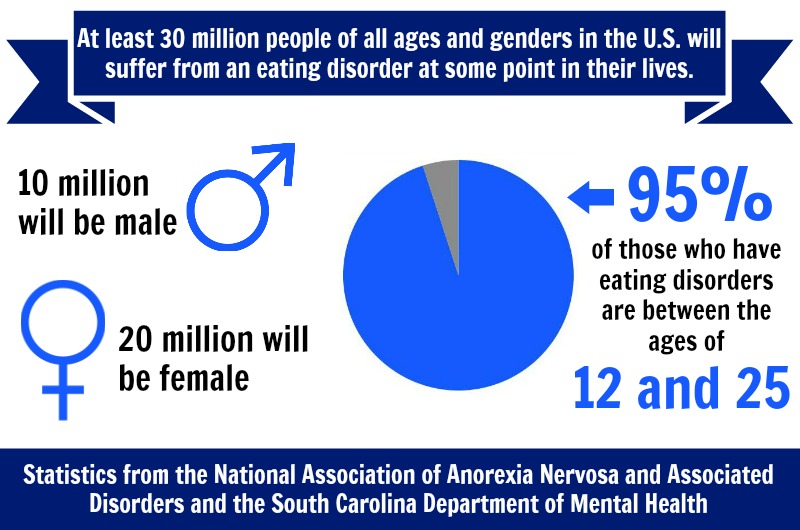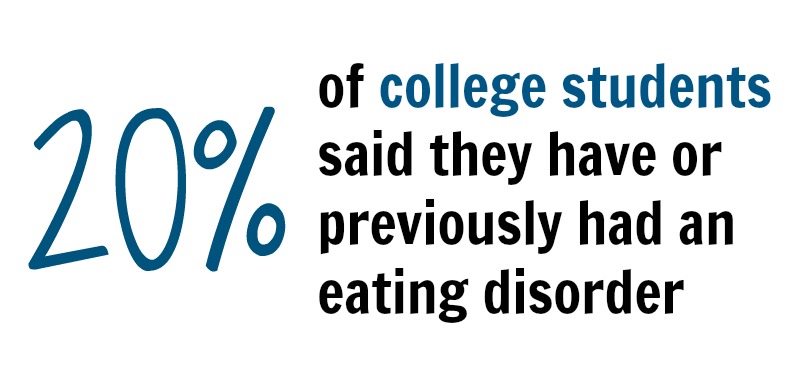
Chloe Lindsey remembers clearly how her eating disorder started. While scrolling through her Tumblr feed during her freshman year of high school, Lindsey came across a vivid image of a boy with his arms crossed, covered in cuts and scars. That photo took her to a myriad of disturbing websites promoting suicide, self-harm, and eating disorders.
Something in Lindsey connected with the people on the websites. She had grown up in a broken home without a father, similar to many of the stories those anonymous users shared. Lindsey first started harming herself, then became more intrigued in the websites promoting eating disorders.
“I thought it was so fascinating that girls could be so thin,” Lindsey recalled. “I felt like I needed to be that person.”
This was the push that led Lindsey down a long, difficult path of starving herself, binging, purging and a suicide attempt. Three years later, and after many small recoveries and relapses, Lindsey was finally able to live without an eating disorder.
Lindsey is currently a healthy BYU sophomore, despite the many effects she still feels and struggles with from the eating disorder, which has the highest mortality rate of any mental illness.

Eating disorders are categorized into four main types: Anorexia Nervosa (inadequate food intake and intense fear of weight gain), Binge Eating Disorder (frequent episodes of consuming large amounts of food followed by strong guilt or shame), Bulimia Nervosa (frequent episodes of consuming large amounts of food followed by behaviors to prevent weight gain, such as self-induced vomiting), and Eating Disorder Not Otherwise Specified (other types of less-common eating disorders).
Dr. Wendy Hoyt, a licensed psychologist, said there are so many factors that lead into developing an eating disorder that she doesn’t believe there is a straightforward way to prevent one.
“But there are steps we can take culturally and within ourselves and within families that will decrease the likelihood of one developing,” said Hoyt.
Shannon Ricks, a therapist at the Center for Change in Orem, said the number one factor she has seen in the development of eating disorders is how the mother of the person affected feels about her body. She said every negative comment or action a mother makes regarding her own body image is relayed to the child. This can affect both males and females.
Hoyt and Ricks also agree a risk for a potential eating disorder is dieting. Ricks said the only reason a person should diet is when the diet will help with a medical condition. Other than that, there is no reason for someone to restrict the foods they eat, she said.
Dr. Lauren Barnes, director of clinical training and professor of Marriage and Family therapy at BYU, said small steps can be taken at any time in a person’s life to help them prevent an eating disorder from developing. These can include someone listening to their body, learning what foods and activities make them feel good and engaging in mental and emotional self-care.
Finally, Lindsey said, if you are feeling any concerns about your body, communication is very important.
“Talk to someone. You can do it. As much as your thoughts are telling you that you have to keep it a secret and you need to be ashamed, you can always beat that by telling someone,” Lindsey said. “Even if you don’t tell them everything, just say you’re going through a hard time and need someone to be there for you.”
Melissa Taylor, Outpatient Clinical Director of the Center for Change, said unusual behavior around food and strict eating habits and rules are strong indicators that someone may have an eating disorder.
For example, an individual may avoid going out to eat or refuse to eat in front of other people is a warning sign, according to Taylor. Other warning signs include excessive exercise, dieting, preparing food for others but not eating it and visiting the bathroom after meals.
Physical symptoms of an eating disorder can include someone being cold all the time— even in warm temperatures, dry skin, swollen cheeks, discolored teeth and gums, fine hair growing abnormally on the body or calluses on the backs of hands and knuckles.

Helping a friend or family member with an eating disorder can seem intimidating, but experts suggest persistence, patience and love are key.
“I would recommend directly expressing concerns, keeping in mind that they may not be well-received the first few, or even many times,” Hoyt said. “Push through the initial resistance and keep asserting concerns.”
Lindsey said she had a close friend who had a significant impact on her recovery. She said her friend had known for a while something was wrong, but the friend didn’t know how to approach her, so she just did her best to be supportive and open.
For her, Lindsey said it was crucial having someone she could trust. When Lindsey opened up to her friend about her disorder, her friend said she was not going to judge Lindsey or treat her any differently. This helped the embarrassment Lindsey felt fade over time, which led to her recovery.
“The best way to get to someone with an eating disorder is to be that person,” Lindsey said. “To be really loving, really supportive and it always helps when you open up about something yourself.”
Lindsey is open about her story now because she hopes to inspire and help people going through situations similar to hers. Her ultimate message to anyone who may be struggling with an eating disorder is that things can get better.
“It’s OK that you went through it or that you’re going through it. It’s not something you need to keep hidden,” Lindsey said. “Don’t be ashamed of your story. Everybody has a story of how they became who they are. Some people’s stories are different, sadder. That’s just how life goes and that’s OK.”




